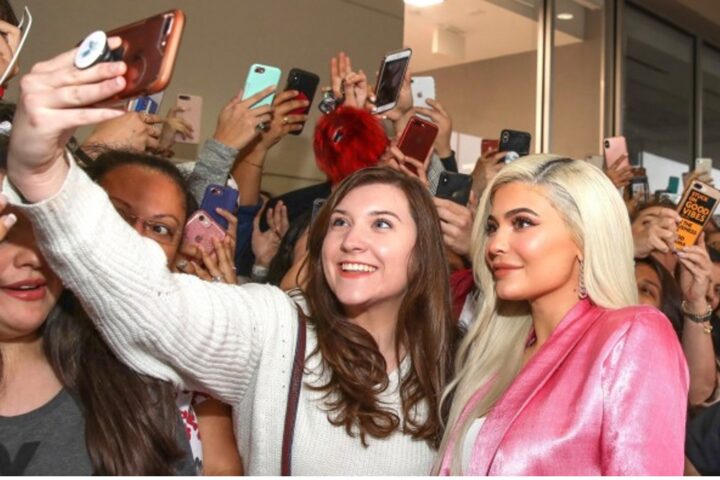While business success of most brands is usually measured by how large the consumer base is, the same is not the case for luxury brands. The peculiarity of this category of goods enables the success of these brands to be measured not just by the size of the consumer base, but by how much it is heavily coveted. The business strategy of this class of brands is usually to set prohibitive prices such that though heavily coveted by many, only the rich few can afford. Brands that fall in this category include Gucci, Dior and Prada amongst others.
Luxury brands thus operates on an ideology similar to the rarity principle which dictates that the prestige of a brand starts to reduce as too many people uses it. This accounts for why prices for this kind of goods are excessively high and only the rich and ostentatious can afford them.
In terms of market performance, the luxury goods market has consistently made giant strides in recent times until the global economic meltdown occasioned by the pandemic. Even at that, the market is still projected to rise from about USD 257 Billion in 2020 to USD 352.84 billion in 2027. In the United States, which happens to have the world’s largest market for luxury goods, the market is valued at about USD 51.2 billion. Next to the United States in hierarchy is China which is projected to attain market size of USD 31.6 billion by 2026.
All of the above goes to buttress the fact that the luxury goods market is indeed experiencing sporadic growth despite the adverse impacts of the coronavirus pandemic. But with this growth comes yet another problem. The more popular and much coveted a luxury brand becomes, the higher the likelihood of it becoming a tool in the hand of counterfeiters, who usually make counterfeit or pirate versions of popular luxury brands and sell at relatively lower price to low and middle-income class who would ordinarily not be able to afford the price of the original manufacturers. The stories of how counterfeiters turned Prada into Prado, Pradi, Pradu and other forms of counterfeited brands in the Nigerian market are but one of the many examples of how several luxury brands have suffered in the hands of counterfeiters.
The big question then is how do these luxury brands gets to protect their exclusivity and keep their brands out of the reach of counterfeiters.
Legal Pathway for Protecting Exclusivity
Undoubtedly, one of the major strengths of a good luxury brand is it exclusivity. The ability to keep these goods away from counterfeiters and make it relatively scarce is what enables a luxury brand to engage its prohibitive pricing strategies. To this end, certain legal provisions contained in the several intellectual property laws of different countries have provided some techniques that could be utilized by these brands to protect their exclusivity.
The first and most important of these techniques is to seek and obtain intellectual property protection. The underlying principle behind intellectual property laws in itself is to provide some level of exclusivity to right-holders. Luxury goods usually contains a host of creative elements which intellectual property laws usually seek to protect. For instance, a single luxury good or item can host different IP elements such as fabric design, colors, shapes, patterns and the overall outlook of an article.
For most luxury fashion brands, copyright, industrial designs and trademarks especially, are of paramount importance. While copyrights generally protect literary and artistic works, industrial designs on their own part protect the physical appearance of the object such as a distinctive shape design for a wristwatch. It is important to note that, while the cut or shape of the item might not necessarily be protected by copyright, when the article contains some artistic elements such as applied arts, such aspects of the work may be granted copyright protection, provided that these portions can be identified separately from the utilitarian aspects of the object. This is known as the separability principle established in the famous case of Star Atlethica v. Varsity brands.
Trademarks helps to protect the brand name from being utilized by other counterfeiters. Famous luxury brands usually leverage on this to prevent infringers from utilizing the same or similar brand name, so as not to deceive the public and compromise their brand quality.
Another means through which luxury brands can leverage on intellectual property laws to maintain exclusivity is by utilizing their right of reproduction and distribution. This is of particular relevance to copyrights, trademarks and industrial designs. The right of reproduction enables luxury brands to be in exclusive control of the reproduction of their goods, such that third parties who wishes to reproduce such must first obtain a permission or license from them. As a result, luxury brands can leverage on this to prevent counterfeit producers from hijacking their market.
In the event that any licensing agreement is made to grant another party the right of reproduction, luxury brands can still uphold their excusive rights by signing a non-disclosure agreement which mandates the licensee to not disclose confidential information relating to the production details and make-up of their work. This in a way helps to ensure that exclusivity to a large extent is retained. Additionally, it is often advisable to also conduct some due diligence on the previous activity of the potential licensee before entering into the agreement at all.
As regards the right of distribution, luxury brands can always leverage on this to push the frontiers of their exclusivity objectives. This right enables luxury brands to ensure that they control the supply chain of their goods. The goal is usually to create some sort of artificial scarcity in such a way as to ensure that only a selected few is able to afford the goods, thus giving room for a prohibitive pricing, by reason of the operation of the forces of demand and supply. This accounts for why most luxury brands hardly involve in any franchising contracts.
Conclusion
The struggle to protect exclusivity and the fight against counterfeiters’ operation is usually a huge task for most fashion luxury brands. To a large extent, it determines the business success and market performance of most brands. As a result, it is usually important to utilize the instrumentality of the law to uphold these exclusivity goals. The role and benefits of intellectual property laws in particular is very germane and should never be downgraded upon.
Author:
Glory Oladipo is a third-year law student at the better by far University of Ilorin. He is passionate about issues that falls around the terrain of intellectual property and this has informed his bias for areas such as copyright, trademarks, patents and other aspects of Intellectual property law.
Glory is an alumnus of the Harvard law copyright x course and has also been certified by other reputable organizations such as the World Intellectual property organization, where he completed the general course on intellectual property. Glory enjoys writing on topical issues in the intellectual property space and has a number of legal articles and essays credited to his name.
More recently, Glory developed a passion for fashion law through the Intellectual property club university of Ilorin and the African Fashion law where he was selected alongside other Intellectual property enthusiasts from across the globe, for a close-knit fashion law mentorship program handled by Fashion law experts selected from different jurisdictions. He has since developed a sudden interest for this field and continues to explores it.
Glory possesses a creative and analytical mind and an excellent problem-solving skill. At his spare time, he enjoys reading, writing and thinking. Glory is one of those who strongly believes that crafting an efficient intellectual property framework for Nigeria remains a catalyst for fast tracking innovation and boosting business efficiency across different industries.










